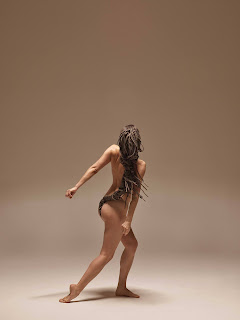That is a very long list! I've been inspired by so many great artists. I've taken inspiration from James Baldwin, Tennessee Williams, Charles Ludlam, Jackie Curtis, and Ethyl Eichelberger for sure. In the show, we actually talk about my greatest influence, Eva Le Gallienne. But the list goes on and on. I take so much inspiration from fellow artists, but I also draw on my own life, my own experience of the world, with this show especially.
2. How did you come to collaborate with director Dusty Childers?
Dusty is one of my dearest friends in the entire world. His eye for aesthetics and his natural storytelling abilities made him the obvious choice for this very personal show. It's been a dream of a process, with so much support and love flowing between us, we both see the performances as merely widening the circle of the joy we've already created.
3. What have you learned from writing new work during a pandemic?
Now is the time for innovation and patience. We have to continue to understand what the theatre is and can be in this new era and realize that perhaps not all the old forms will manifest in this new paradigm. And that's coming from a raging traditionalist! But I see this shift as a time for new dreams. The theatre is a place for collective belief and imagination, those are its strengths. By making work that plays upon those natural attributes, and for goodness, to invest in the power of delight, I think new work can spring forth from this rather dire period.
4. Can you elaborate on the process of creating semi-autobiographical work?
Well this show, To Build a Soul is a collection of autobiographical stories that talk about my relationship to the Theatre. So in that way, you're weeding out the things that don't serve that narrative. My life, everyone's life, in fact, is layered with a multitude of influences and events, but when we're establishing one view, we must stick to it, and hue out anything that doesn't serve the story you're telling.
5. You’re publishing a new book next year! What are your upcoming plans for 2022?
Oh so much! In January alone, I debut another solo work, My Beatnik Youth, for the Under The Radar Festival at The Public. I return to Joe's Pub for a new monthly variety show, Assorted Fruit, that will run for all of 2022. I have a play, Lottie Platchett Took A Hatchet, debuting at SF Sketchfest and then going to the Edinburgh Fringe in August. And at least three readings of new plays this year, and the final reworking of an older play of mine, The Click of the Lock.
6. What does working at La MaMa mean to you?
Well, this is my second show here at La MaMa, so in a way, it feels like a homecoming. I'm so honored to be here as an artist creating work in this illustrious place with such a rich and formidable history. But it's also a place of new work, of new voices, creating new work that will continue the brave spirit of Ellen Stewart. You still feel her presence in the building. And yet it's not a place of intimidation, everyone here makes you feel so welcome and free. It is a spirit of YES! Telling each artist who comes through these doors, to go farther, do better, and make something new. It's invigorating and thrilling, and as the naturally greedy person I am, I only wish for more.
To Build a Soul
Directed by Dusty Childers
New York, NY 10003
Sundays at 4pm
Adults: $25 in advance; $30 day of show
Students/Seniors: $20 in advance; $25 day of show
















